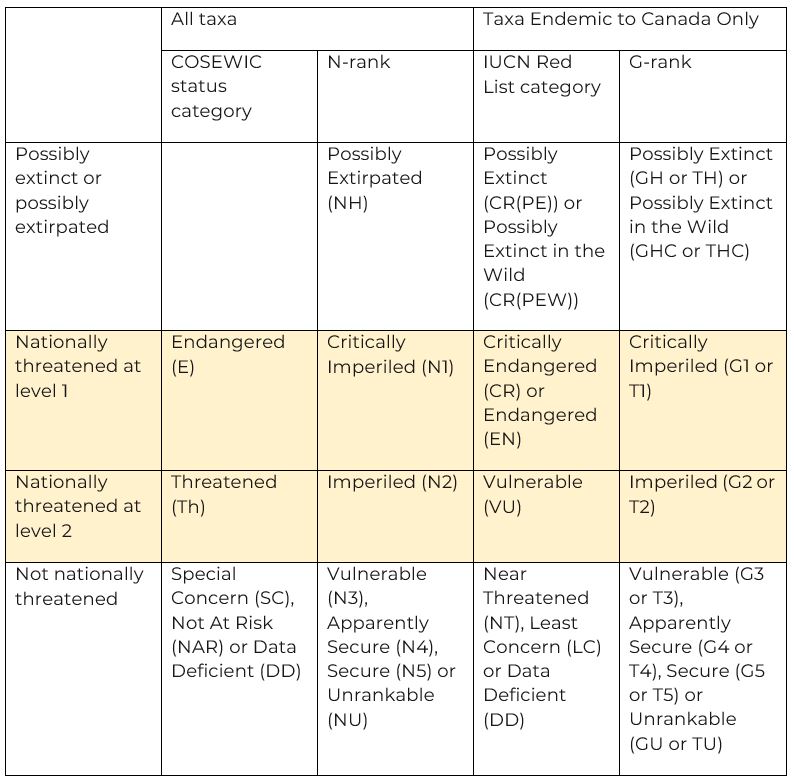The following tables (taken from the KBA Canada National Standard) provide a summary of national and global KBA criteria and thresholds. Further details and definitions are available in the Global KBA Standard and the Global KBA Guidelines, as well as the National Standards. In all tables, the Population or Extent Threshold applies to the global population size (for species) or extent (for ecosystems) in the case of global KBAs, and to the national population size or extent in the case of national KBAs. The Reproductive Unit requirement is identical for global and national KBAs.
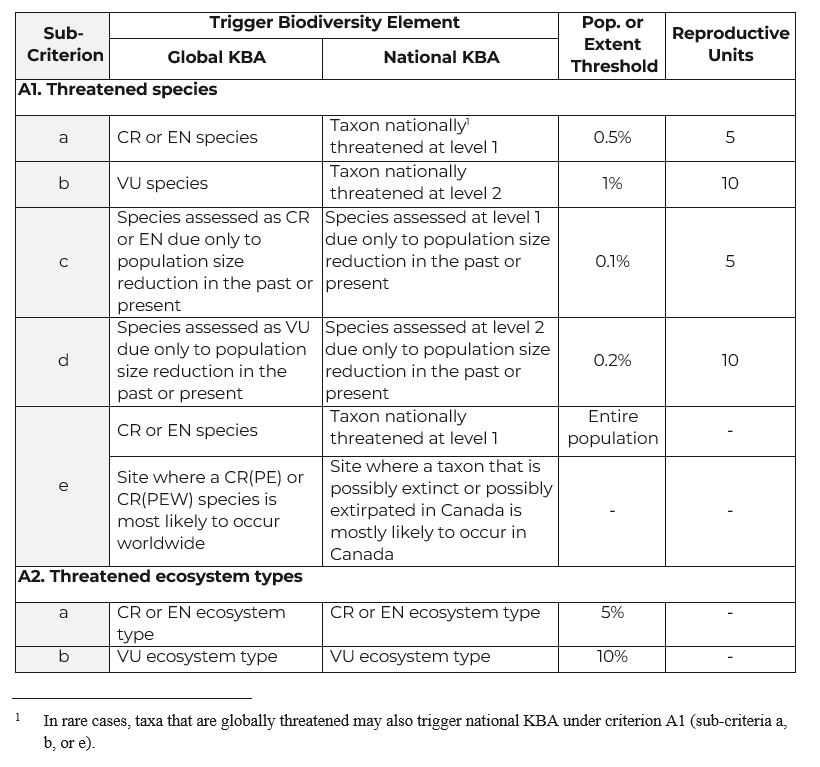
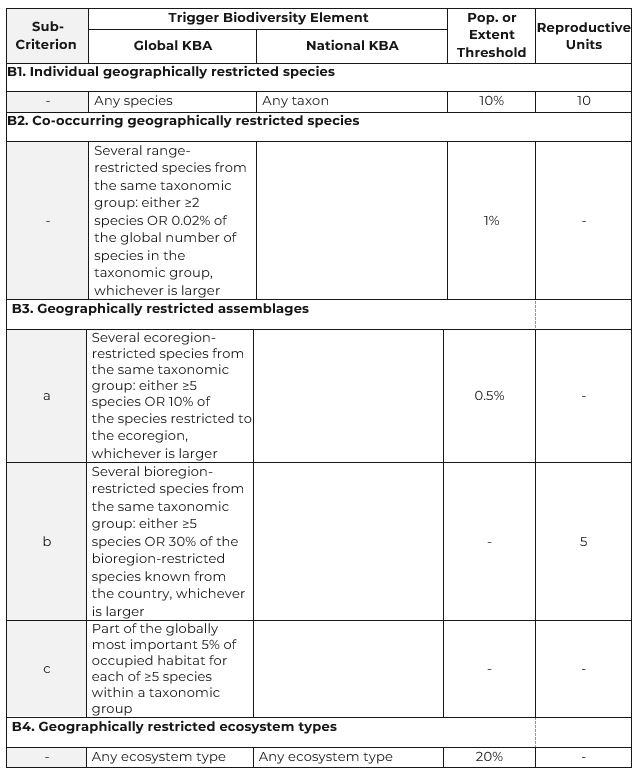

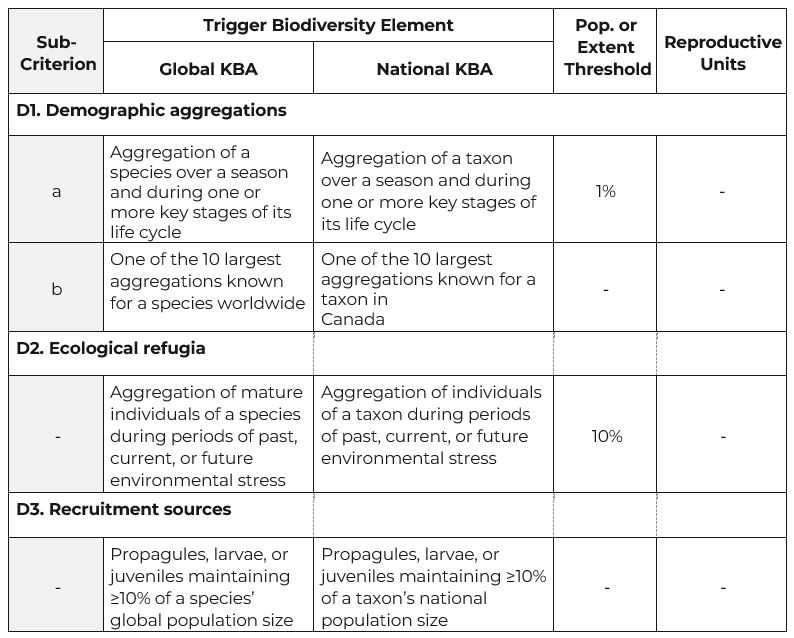
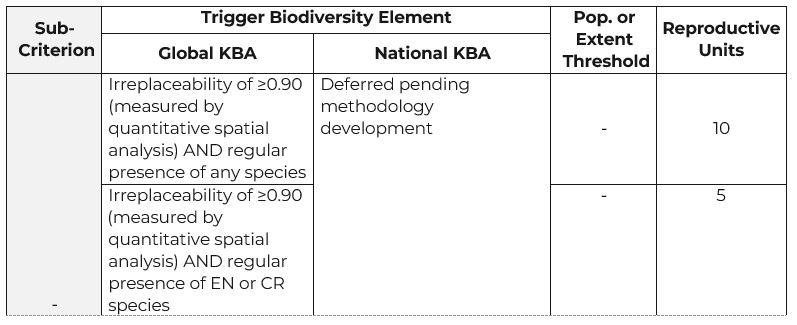
A taxon’s IUCN Red List category, G-rank, COSEWIC status category, and N-rank determine whether it is considered nationally threatened, and at which level, as shown in the following table. National A1 trigger species are identified in the yellow rows of the table below. Note that only G-ranks, N-ranks, and COSEWIC status categories that are <12 years old are considered, whereas only IUCN categories that were assigned <10 years ago are considered. There may be cases where the use of an older rank is allowed, if a compelling rationale is provided (e.g. the population trends have remained stable and reassessment is simply behind schedule).
